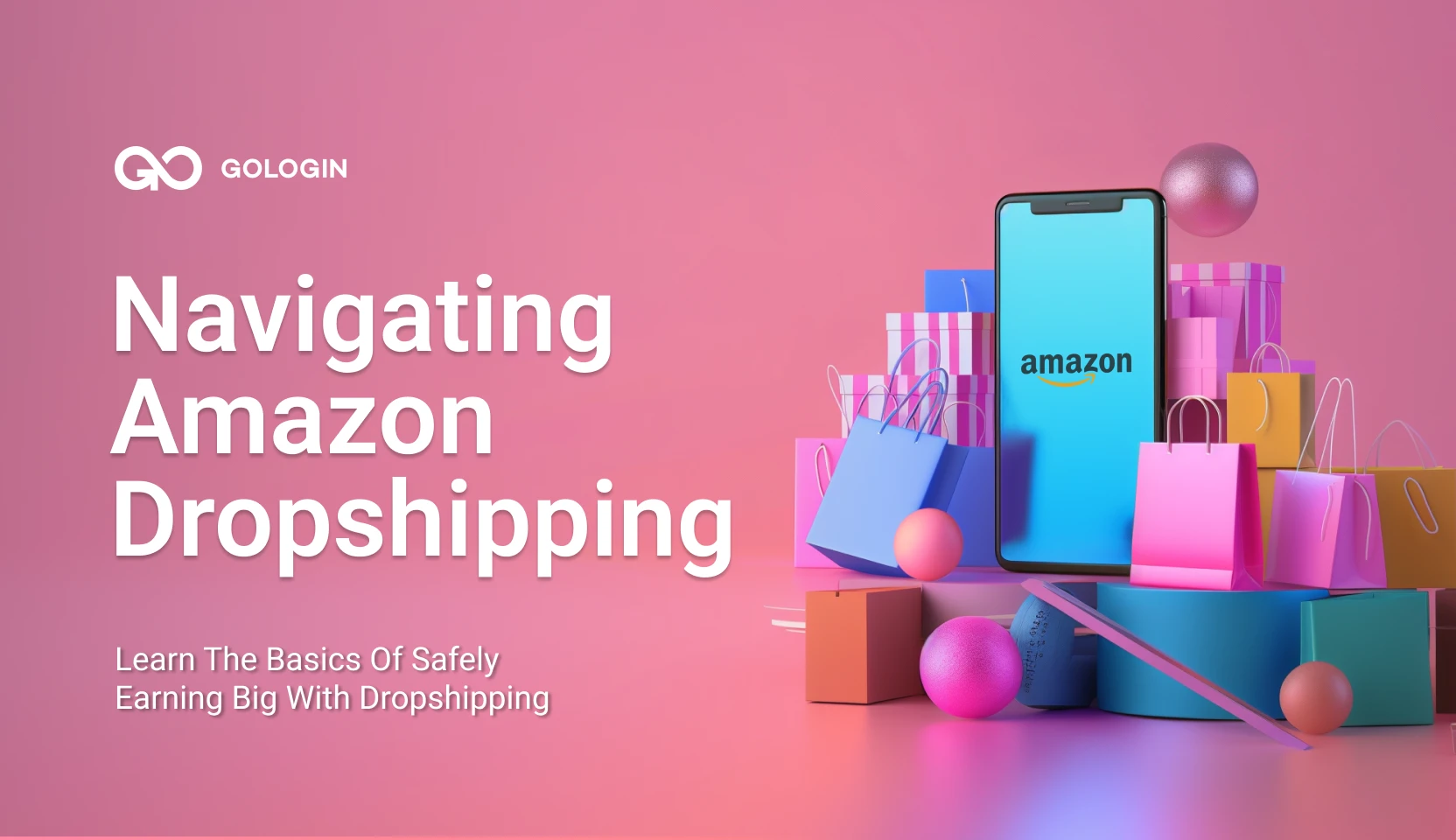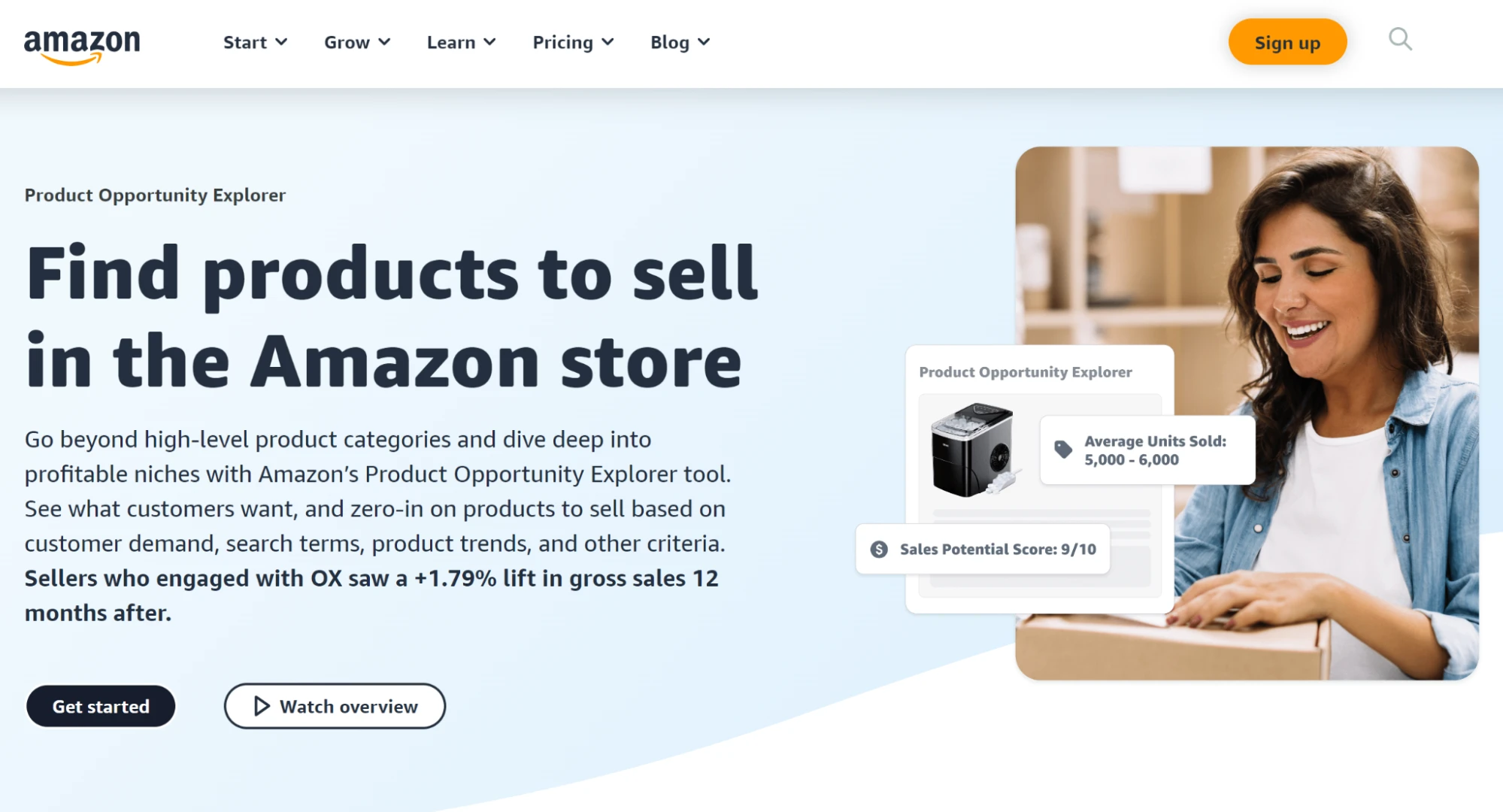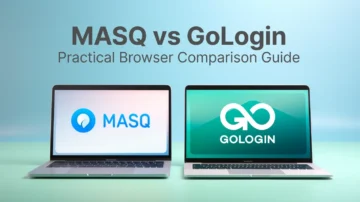Today, Amazon is a world leader of e-commerce. It has an array of products online that are able to reach the largest number of clients when compared to other available means – especially with Amazon dropshipping.
Amidst the hype about digital markets, dropshipping is still an ever emerging business idea. This is an ideal option for any business person who may prefer dealing with Amazon but is not willing to invest heavily into goods upfront.
What Is Amazon Dropshipping?
Amazon dropshipping is a business model that enables vendors to sell on Amazon without having to keep the products in stock. Instead of sellers holding inventory, they buy the goods from third parties who ship them directly to buyers after receiving payment.
Going for a dropshipping model, it becomes possible for merchandise dealers to offer any kind of products to clients. Dropshippinh easily overcomes all the stress related to keeping stock, space, and money.
Nevertheless, there are also some difficulties: high level of competition, problems with suppliers and compliance with strict policies of Amazon.
Understanding Amazon’s Dropshipping Policies
One can make a lot of money from dropshipping on Amazon, but there are some rules that one must strictly follow. These Amazon dropshipping policies exist in order to ensure transparency and maintain integrity in the marketplace. See below for an explanation of the main policy requirements:
1. Seller of Record Clarity
Amazon emphasizes transparency when it comes to dropshipping. It’s imperative that customers are aware of who the seller of record is. Therefore, if you engage in dropshipping on Amazon, make sure it’s clear to customers that you are the seller they are transacting with.
2. Ban on Third-Party Purchases
Amazon forbids buying items from a third party, including Amazon’s own store, and sending them straight to consumers without transparently identifying yourself as the official seller. This ensures accountability and transparency in the transaction process.
3. Packaging and Branding
When fulfilling orders through dropshipping, it’s essential to ensure that all packaging slips, invoices, external packaging, or any other information do not indicate a seller’s name or contact information other than your own. This helps maintain consistency and avoids confusion among customers.
4. Fulfillment Agreements
If you opt to use another company’s fulfillment service, a third-party logistics provider, or a drop shipper, you must have a clear agreement in place where you are identified as the sole seller of record. This agreement should stipulate that your identity is prominently displayed on all packaging slips, invoices, external packaging, and other relevant documentation.
5. Removal of Third-Party Identifiers
Prior to shipping orders, ensure that any packing slips invoices external packaging information that identify third party sellers is removed. This step is crucial to prevent customer confusion and maintain compliance with Amazon’s policies.
6. Responsibility for Returns
As a seller on Amazon, you remain responsible for accepting and processing customer returns, regardless of whether you utilize dropshipping or other fulfillment methods. It’s essential to comply with Amazon’s Business Solutions Agreement (BSA) and other applicable policies regarding returns and customer service.
Pros and Cons of Amazon Dropshipping
Pros of Amazon Dropshipping
- Minimal Initial Investment: Entrepreneurs can start their business on Amazon without having to make upfront investment through dropshipping.
- Quick Setup: It takes a short time to start selling on Amazon after setting up your dropshipping enterprise; hence, you can quickly get into business.
- No Storage Expenses: With dropshipping, sellers don’t need to maintain inventory, saving on storage fees and warehouse costs.
- Automation: Dropshipping operation is easily automated to carry out most of the tasks, like order processing and controlling stock keeping, leaving one with enough time for other important areas of the business.
- Market Research Ease: Utilizing Amazon’s platform, sellers have access to valuable data and analytics, enabling informed decisions and effective market research.
- Amazon’s acceptance of dropshipping: Amazon permits dropshipping, providing a ready-made marketplace with millions of active users to drive traffic. This access to Amazon’s vast customer base can significantly boost sales potential for dropshippers more than any other platform.
Cons of Amazon Dropshipping
- Extended Delivery Times: The delivery period for dropshipped items on Amazon may be longer than usual due to difficulties like sourcing from different suppliers and shipping logistics. It can potentially lead to customer dissatisfaction.
- Quality Control Challenges: With dropshipping, sellers relinquish direct control over product quality, relying on third-party suppliers to maintain standards. It can sometimes result in inconsistencies or issues with product quality.
- Extreme Competition: The Amazon marketplace is highly competitive, with numerous sellers vying for visibility and sales. That’s why it’s challenging for newcomers to establish themselves.
How to Start Dropshipping on Amazon
Setting Up an Amazon Seller Account
- Choose the Right Account Type: Amazon offers Individual and Professional seller accounts. To start dropshipping on Amazon, a Professional account is recommended as it provides access to advanced selling tools and allows listing an unlimited number of products on Amazon.
- Register Your Account: Visit Amazon’s Seller Central website and follow the steps to register your account. You’ll need to provide basic information, including your business details, banking information, and tax identification.
- Complete Verification: Amazon requires additional verification steps to ensure your identity and legitimacy as a seller. This could include providing identification documents or confirming your business information.
- Set Up Payment and Shipping Methods: Configure your preferred payment and shipping methods within your seller account. Amazon offers various options, including Fulfillment by Amazon (FBA) or Fulfillment by Merchant (FBM).
Researching Profitable Niches
- Identify Your Interests and Expertise: Start by brainstorming niches that align with your interests, knowledge, and expertise. This will make it easier to research and market products effectively.
- Use Amazon’s Tools: Leverage Amazon’s product research tools such as the Best Sellers Rank (BSR), Amazon’s Choice, and the Product Opportunity Explorer. These tools can help you identify popular niches and products with high demand.
- Analyze Competitors: Study the top sellers in your chosen niches to understand their product offerings, pricing strategies, and customer reviews. Identify gaps or areas where you can differentiate your products.
- Consider Profit Margins: Calculate potential profit margins by factoring in product costs, Amazon fees, shipping expenses, and other overheads. Choose niches and product categories with healthy profit margins to ensure sustainable business growth.
Finding Reliable Suppliers
- Research Supplier Options: Look for reputable suppliers or wholesalers who offer dropshipping services. Consider factors such as product quality, reliability, shipping times, and customer service.
- Verify Supplier Credentials: Conduct due diligence to verify the legitimacy of potential suppliers. Check for reviews, testimonials, and any certifications or memberships with industry organizations.
- Communicate Clearly: Establish clear communication channels with your chosen suppliers to ensure smooth order processing and fulfillment. Clarify expectations regarding product quality, packaging, shipping methods, and returns.
- Negotiate Terms: Negotiate favorable terms with your suppliers, including pricing, minimum order quantities, and shipping arrangements. Build a strong relationship based on trust and mutual benefit.
Optimizing Product Listings
- Keyword Research: Use relevant keywords in your product titles, bullet points, and descriptions to improve visibility in Amazon’s search results. Use dropshipping tools like SellerApp to identify high-volume keywords.
- Compelling Product Descriptions: Write clear, concise, and persuasive product descriptions that highlight the features, benefits, and unique selling points of your products. Use high-quality images and videos to enhance the visual appeal.
- Price Competitively: Set competitive prices based on market research and analysis of similar products. Consider offering discounts, promotions, or bundled deals to attract customers and drive sales, and with tools like JungleScout, one can make informed decisions to stay ahead of the competition.
- Optimize for Conversions: Continuously monitor and optimize your product listings based on performance metrics such as click-through rates (CTR), conversion rates, and customer feedback. Experiment with different variations to maximize sales.
Launch your product
- Soft Launch: Test your product listings with a soft launch to gauge customer response and identify any issues or areas for improvement. Monitor sales data, customer reviews, and feedback to refine your strategy.
- Promote Your Products: Utilize Amazon’s advertising options, including Sponsored Products and Amazon PPC (Pay-Per-Click), increasing visibility and driving traffic to your product listings. Leverage social media, email marketing, and influencer partnerships to expand your reach beyond Amazon.
- Monitor Performance: Regularly monitor key performance indicators (KPIs) such as sales, conversion rates, profit margins, and customer satisfaction metrics. Use this data to make data-driven decisions and optimize your dropshipping business on Amazon for long-term success.
Amazon Dropshipping vs. Other Methods
1. Wholesale
When buying in wholesale, you get large quantities of commodities straight from the industries or distributors at a discounted price. One is in charge of how the goods are packed and their quality, which helps him to keep on the same level of standards while shipping them.
Purchasing goods in wholesale demands high initial capital outlay since one has to buy enough stock at once. Although it provides greater profits for every unit when compared to dropshipping.
2. Private Label
With private label, you source generic products from manufacturers and customize them with your branding and packaging. Private label offers higher profit margins and greater control over the product, branding, and pricing compared to dropshipping.
Private Label requires a higher initial investment and more effort in product development, branding, and marketing.
3. Retail Arbitrage
Retail arbitrage involves purchasing commodities at reduced prices from retail stores and selling them to make a profit. It entails more work in finding goods and moving them physically as compared to dropshipping.
It may have higher returns over a brief period on some specific items, but this could also limit its scalability due to the fact that there might not always be enough discounted products available.
4. Fulfilled by Amazon (Amazon FBA)
Amazon FBA allows you to deliver goods to Amazon warehouses and let them do the packaging, storage, then shipping.
It enables one to be a prime member entitled to various benefits, such as quick delivery and high marketplace exposure, increasing sales.
Amazon FBA has a larger capital outlay and cost than dropshipping with respect to initial investment and fees. However, it may scale easily and take less time after establishment.
Streamlining Your Amazon Dropshipping Process
Although dropshipping is a profitable business model, one must find ways of simplifying the process in order to increase efficiency and profit. Below are three tactics for streamlining your dropshipping business:
1. Automating Order Fulfillment
Order fulfillment, which is done manually, may consume a lot of time and is also susceptible to mistakes. By automating this process, you will be able to save time and also make sure that everything is accurate. To automate order fulfillment, take the following steps:
- Integration with Suppliers: Employ software solutions that work with your vendors’ systems. This integration will help in the smooth flow of the whole process as it automatically combines data on goods availability, inventory sufficiency in real time and customer’s order particulars.
- Order Management Software: Purchase order management software that will enable you to automate all order processing in one place. With such tools, it becomes possible for the software to follow up shipments as well as keep clients informed about their purchases.
- API Integration: Most e-commerce platforms have APIs (Application Programming Interfaces) that can be used to link third-party software. Integrating your ecommerce platform with order management software or supplier systems through APIs will facilitate a seamless flow of data across disparate systems with little or no need for manual input.
2. Optimizing Product Selection and Pricing
To succeed in dropshipping, it is important to choose the right goods for sale, which should also be priced attractively. Here’s how you can enhance your pricing strategy and product selection:
- Market Research: Carry out extensive market research in order to recognize trending goods, specialized markets, and competitive prices. Take advantage of tools such as Google Trends, social media statistics and analyze your rivals’ prices so that you can make the right choice about what products to sell.
- Profit Margins: After subtracting all costs (product cost, shipping charges, other expenses), what remains as profit margin? Ensure that you strike a balance between being competitive enough and making profits to maximize your earnings.
- Dynamic Pricing: Apply dynamic pricing strategies which will enable you to change the prices depending on different circumstances like market conditions, what other sellers’ sale is etc. Using automated repricing tools can make this easier without losing out on profits.
3. Running Multiple Seller Accounts
It isn’t easy to effectively expand your dropshipping business because most e-commerce and social platforms do not allow people to have many seller accounts.
GoLogin is a multiple account browser that allows you to bypass platform and location restrictions. You can create multiple seller accounts without getting banned.
Designed to help dropshippers, GoLogin offers a user-friendly interface and great features:
- Built-in Proxies: Use 10 free built-in proxies with the option to integrate paid proxies within the application, ensuring anonymity and security.
- Continued Sessions: Eliminate the hassle of logging in daily with continued sessions, saving time and effort.
- Mass Profile Actions: Perform bulk actions such as sharing, editing, deleting, and grouping profiles to manage your accounts efficiently.
- Team Collaboration: Enable remote managers to work seamlessly across multiple accounts without encountering Two-Factor Authentication hurdles.
- Custom Employee Access: Define access levels for each team member, enhancing security and control.
- Customizable Profile Table: Organize your profiles with notes and tags for easy reference and management.

Other than that, running your account(s) via GoLogin will protect you from sudden selling volume drops if you travel a lot. In this case, GoLogin will provide you with a stable account geolocation so your account will not be shadowbanned.
To e-commerce websites, each GoLogin browser profile appears to websites as a separate user. Despite its advanced technology, the tool is very easy to use and had great online reputation. Here’s a quick guide to the web version.
Download GoLogin for free and manage multiple accounts without bans!
Summary on Amazon Dropshipping Guide
In this article, we explored Amazon dropshipping, a business model that allows vendors to sell on Amazon without holding inventory.
We also discussed Amazon’s dropshipping policies, the pros and cons of dropshipping on Amazon, and provided a guide on how to start dropshipping on the platform. We compared Amazon dropshipping with other methods like wholesale, private label, retail arbitrage, and Fulfilled by Amazon (Amazon FBA).
Lastly, we offered tips on streamlining the Amazon dropshipping process through:
- automation
- optimizing product selection and pricing
- running multiple seller accounts using tools like GoLogin.
Try to use GoLogin for Amazon accounts during 7-day free trial – no credit card needed!








